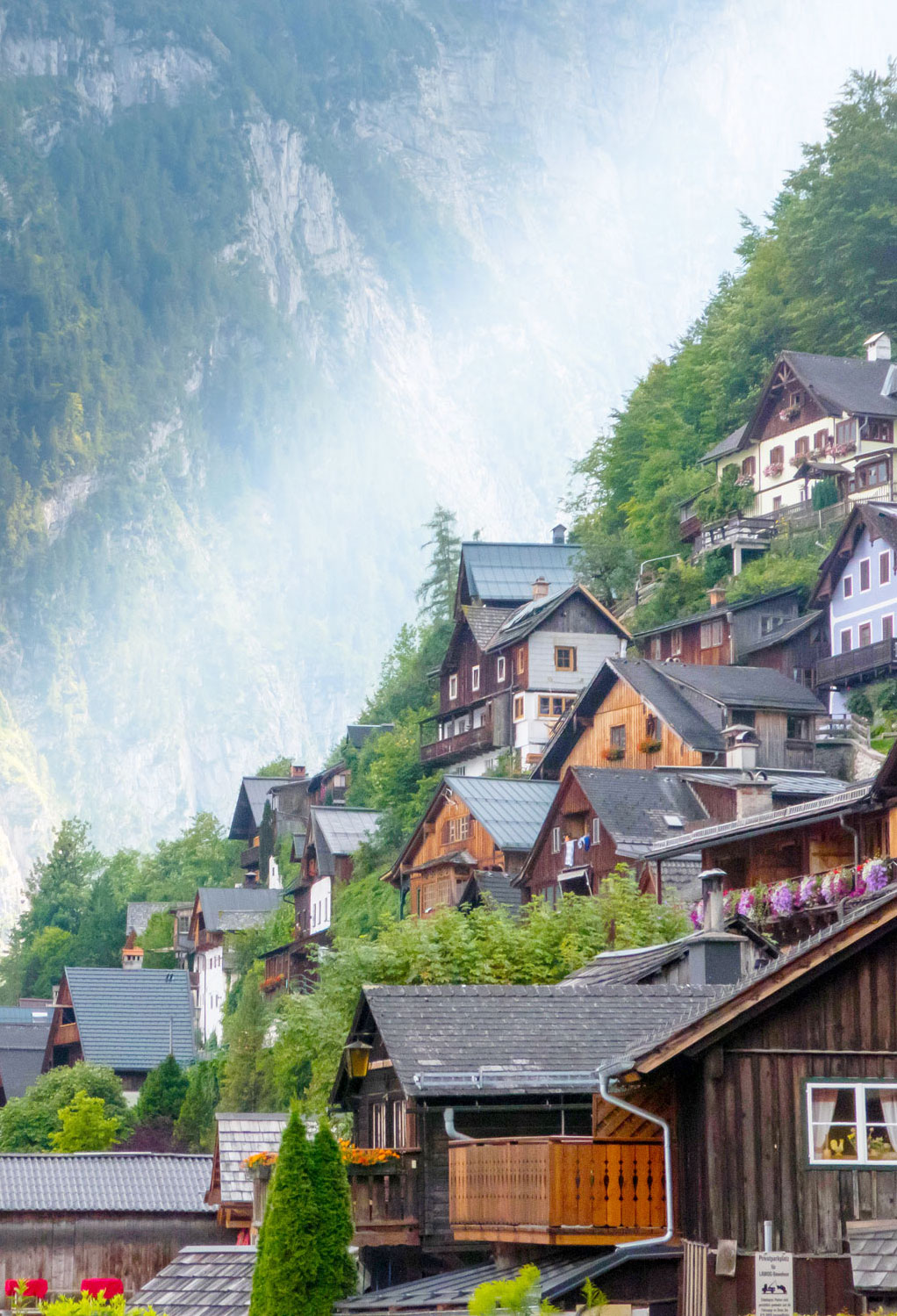Oscar Wilde once said, “Imitation is the sincerest form of flattery.” Why shouldn’t that notion apply to travel? If you’ve ever found yourself on vacation thinking that the place you’re in feels remarkably familiar, maybe that’s because it is. Across the world, there are cities, neighborhoods, buildings, and landmarks that bear a striking resemblance to others — often continents apart. Let these six look-alike destinations serve as inspiration for your next trip.
Hallstatt, Austria / Hallstatt, China

China’s fad for imitation has led to the construction of numerous copycat towns: Paris is reproduced in Tianducheng, Jackson Hole near Beijing, and Venice in Dalian, to name just a few. Perhaps the most famous is Hallstatt, which is a carbon copy of a picturesque village of the same name in Austria’s Salzkammergut region.
Located within Huizhou in the Guangdong province, the city features replicas of the fountain, church, and main street found in its Austrian counterpart. Still, it lacks the historic and cultural value of the original, which is a UNESCO World Heritage Site and home to the world’s oldest salt mine. This characterful place, hemmed in by the Dachstein Mountains, was inaccessible for many centuries except by boat or on foot. As a result, Hallstatt was largely spared from modern development. Instead, colorful Baroque-style buildings still line its charming cobblestone streets.
Guanajuato, Mexico / Gamcheon, South Korea
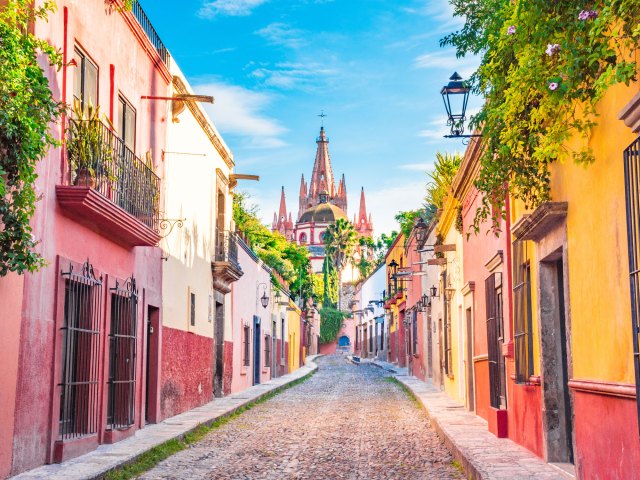
The central Mexican city of Guanajuato, founded in 1554, was once at the heart of the country’s silver-mining industry. The wealth that it generated paid for the construction of some of Guanajuato’s most ornate churches, and today the city is as well known for its colorful architecture as it is for its religious and industrial heritage. One of the best ways to experience it is to ride the funicular to Monumento al Pípila and take in the panoramic views from above.
The vibrant paintwork brings to mind the Gamcheon Cultural Village in the South Korean city of Busan. This neighborhood was one of the city’s poorest areas, when, in 2009, the Ministry of Culture, Sports, and Tourism funded a regeneration project to make it a more attractive place to live. Though some have dubbed it the Machu Picchu of Korea, it perhaps has more in common with Guanajuato’s colorful architecture than Peru’s most famous archaeological site.
Statue of Liberty, New York / Statue of Liberty, Tokyo
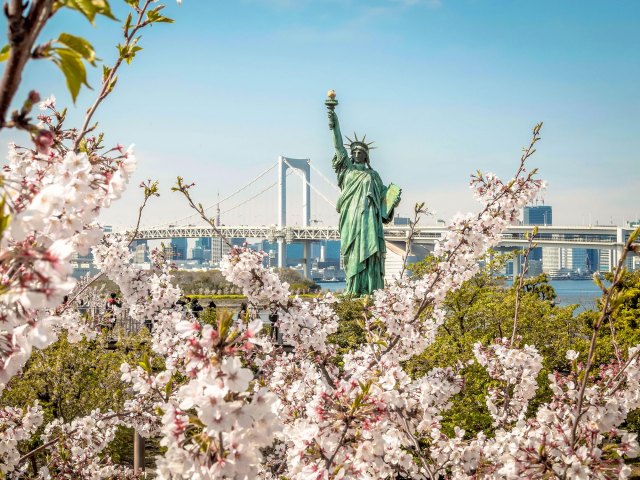
Dedicated in 1886, the Statue of Liberty is one of New York City’s most emblematic landmarks and one of the world’s most recognizable statues. Looking out across New York Harbor from Liberty Island, the statue was a gift from the French people to the United States. French sculptor Frédéric Auguste Bartholdi designed the copper figure, and its steel framework was the work of Gustave Eiffel (of the Eiffel Tower in Paris).
The statue depicts Libertas, the Roman goddess of freedom, which may explain why there are many other similar statues around the world. In Japan, for example, you can travel to Odaiba to see the one-seventh-size replica that has stood in front of the Rainbow Bridge in Tokyo Bay since 1998. Like the original, it symbolizes a friendship with France. And there are other similar statues in Japan — the tallest of them is in Oirase, which sits on the same latitude as New York City.
Haifoss, Iceland / Maletsunyane, Lesotho
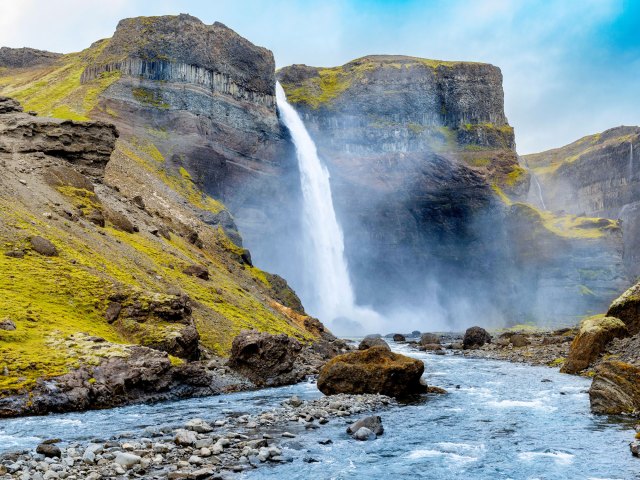
Drive through the Icelandic countryside and you’ll likely come across an impressive number of waterfalls. Though you can see plenty from the country’s famed Ring Road, one of the most remarkable is Háifoss, located on the Fossá River on the edge of the Icelandic Highlands. Its name translates to “the high waterfall,” which is apt when you consider it drops a staggering 400 feet to the valley floor.
Standing in front of Maletsunyane Falls in the southern African mountain nation of Lesotho, you could be forgiven for thinking you’re in the North Atlantic — like its European counterpart, it plunges over basalt softened by lush green vegetation. You’ll find the 600-foot-tall single cataract near the village of Semonkong, whose name means “smoky place” thanks to the near-constant spray from the waterfall. If you have a head for heights, you can even arrange to rappel down the side of the falls.
Leaning Tower of Niles, Illinois / Leaning Tower of Pisa, Italy

Travelers flock to the Italian city of Pisa to see its famous Leaning Tower. From the start, construction of this unusual landmark was beset by problems. After the first three stories were completed in 1173, the weight of the marble caused the structure to sink into the soft ground. The project was put on hold while engineers were tasked with figuring out a solution. When that solution came, it was a dud — making the blocks on the sunken side taller only added to the weight and accentuated the lean.
Nevertheless, this iconic bell tower has never collapsed, and more than 600 years later, it’s a perennial favorite with visitors, who often pose for photos as they pretend to prop it up. But you don’t need to make the journey to Italy to do so: There’s an exact replica of the tower in the city of Niles, Illinois. Businessman Robert Ilg laid out a city park in the 1920s but wanted to disguise a water tower, and a replica of the Italian landmark was considered just the ticket. Thanks to these look-alike landmarks, the cities of Niles, Illinois, and Pisa, Italy, became sister cities in 1991.
Fiordland, New Zealand / Fjords of Norway
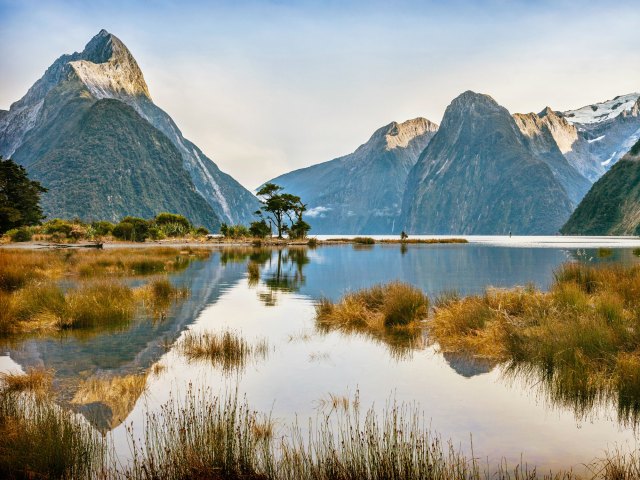
The Fiordland region of New Zealand is home to some of this South Pacific island nation’s most dramatic scenery. Craggy granite mountains rise out of the water, including the famous Mitre Peak (Rahotu in the language of the country’s Indigenous Māori peoples) in the UNESCO-listed Milford Sound (Piopiotahi). Nearby Doubtful Sound boasts bottlenose dolphins, fur seals, and penguins. In both places, waterfalls — some of which stretch hundreds of feet tall — plunge over towering cliffs. Inland, the area’s glacial valleys are just as breathtaking and best appreciated from the air.
But you don’t need to travel to the Southern Hemisphere to find remarkably similar scenery. In Europe, the Norwegian coastline is also known for its fjords — in fact, the word has origins in Old Norse. Highlights of the region include Nærøyfjord, an extraordinarily beautiful arm of the Sognefjord, and Geirangerfjord, known for its three waterfalls: the Seven Sisters, the Suitor, and the Bridal Veil. Even as you move away from the coast, you don’t lose the wow factor — take, for instance, Trolltunga, a spectacular rocky precipice jutting out over Lake Ringedalsvatnet.
More from our network
Daily Passport is part of Inbox Studio, which publishes content that uplifts, informs, and inspires.






